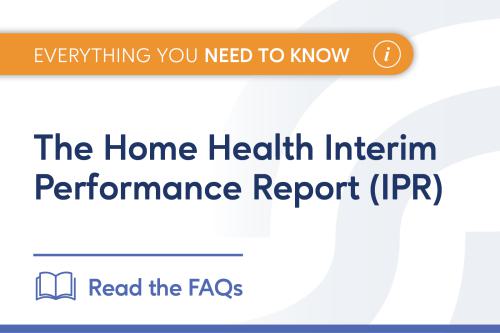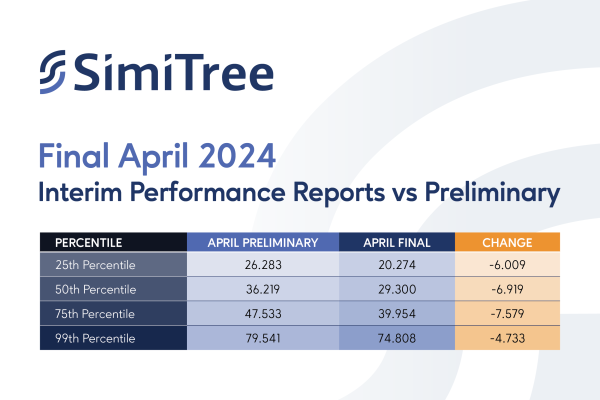Home Health IPR FAQs: Understanding Reimbursement and Strategic Insights

This blog post tackles key questions and answers from the recent webinar, “Master the Home Health IPR: Unlock Reimbursement & Strategic Insights.” Understanding Home Health Case Mix-adjusted Payment Adjustment (CMPSA), also known as the Incentive Program for Improvement on Post-Acute Care (IPRs), is crucial for maximizing reimbursement. Here’s a breakdown of some of the most pressing questions addressed:
Q: My Acute Care Hospitalization (ACH) score jumped significantly recently. Did CMS change how they process claims for the baseline year?
A: You’re not alone. Others have reported similar increases. A closer look is needed to understand the revisions, especially regarding risk adjustment. There could also be a lag in CMS receiving claims data, impacting your ACH score. We can provide you with more details on this via email. Simply complete our form and tell us in a comment that you want to know more about your ACH score!
Q: The risk adjustment model seems unfair. Why do agencies serving chronic care patients score differently from those focused on acute cases?
A: No risk adjustment model is perfect, but it aims to level the playing field. While factors like age and medical history are fixed, accurate OASIS scoring to identify improvement potential is crucial. Additionally, CMS regularly refines the model to adjust outcomes more accurately. Agencies should analyze their patient mix and pinpoint areas for improvement in practice or scoring accuracy.
Q: Which IPR measures consider all patients, and which ones focus solely on Medicare patients or episodes?
A: Claims-based measures include Medicare fee-for-service patients. Survey-based measures consider Medicare, Medicaid, and Medicare Advantage plans.
Q: Why are there such significant differences between the Final and Preliminary Reports?
A: The reasons for these discrepancies can vary. Sometimes, additional data becomes available to CMS after the Preliminary Report is released. This can lead to adjustments in calculations and scoring. Additionally, CMS might refine its methodology between reports.

Q: What should I do with the Final Report? And how can I download my IPR on iQIES?
A: It’s crucial to review your most recent Final April 2024 IPR. This will help you understand your current Total Performance Score (TPS), identify any changes in your percentile ranking or scores compared to the Preliminary Report, and pinpoint areas for improvement.
Here is how to locate your IPR in iQIES:
- Log into iQIES at https://iqies.cms.gov/.
- Select the My Reports option from the Reports menu.
- From the My Reports page, select HHA Provider Preview Reports.
- Select the HHVBP file to view the desired report. To quickly locate the most recently published report, select the down arrow adjacent to the Created Date label at the top of the table. This will order the reports in the folder from newest to oldest.
- Select the file name link, and the contents of the file will be displayed.
Need assistance understanding your IPR? Our team of experts is here to answer any questions you have about performance, OASIS measures, Hospitalization reduction strategies, and more. Schedule a VBP assessment today.
Q: How can I maximize my reimbursement based on the IPR?
A: Understanding your IPR is vital for optimizing reimbursements. Read how to optimize performance for higher reimbursement.
Q: 2022 was a bad year for my agency. How can we improve our scores in 2024 to maximize points and reimbursement?
A: While a low 2022 score sets the improvement benchmark, focus on improvement since then. The key is maximizing “improvement points” compared to your baseline year. Even small improvements in claims-based metrics can significantly impact potential payment adjustments.
Remember:
- Accurate OASIS scoring is essential for fair risk adjustment and optimal reimbursement.
- Analyze your patient mix to identify areas for improvement in practice or scoring.
- Focus on improvement compared to the baseline year to maximize “improvement points” within the IPR program.
This blog post only provides a brief overview of the Q&A session. We encourage you to refer to the full webinar recording and resources for a more comprehensive understanding of Home Health IPRs. The entire webinar can be found on our website under “Consulting” for you to view at your convenience.
Additional Resources:
- Centers for Medicare & Medicaid Services (CMS): https://www.cms.gov/priorities/innovation/innovation-models/home-health-value-based-purchasing-model
- Home Health Compare: https://medicare.gov/care-compare/index.html
We hope this blog post empowers HHAs to navigate the Home Health VBP landscape and thrive in the years to come. Learn more about how SimiTree can help you with the following VBP services on our website, or request a consultation today using the contact form below.
- VBP Assessment
- VBP Data Analytics
- Personalized Work Plan and Implementation Assistance
- Individualized Performance Improvement Projects
- QAPI Program Oversight
- Customized Staff Training Programs

